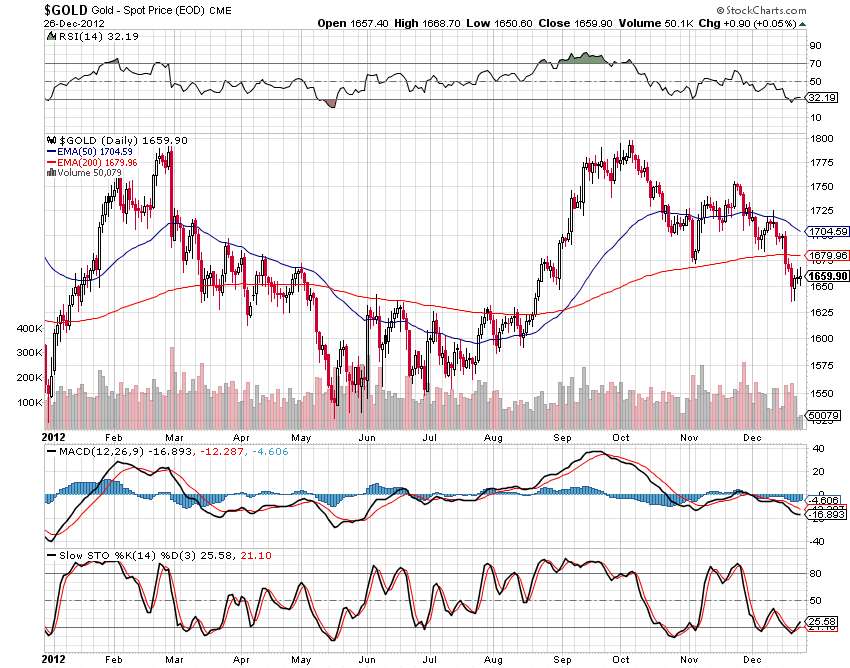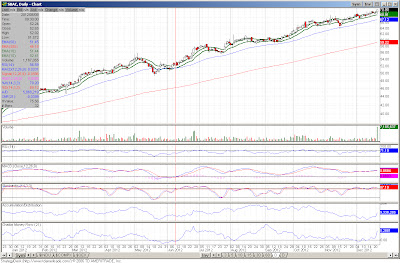Interesting article by Gary Shilling originally on Bloomberg.
Original link here.
Most of us still look at China, the
world’s second-largest economy, as the undisputed leader among
major
developing countries. In the long run, however, I’m
betting on India to emerge as the more significant global
economy.
Those who are dazzled by China often forget that much of
the rapid
growth before 2008 was caused by the shift of global
manufacturing from
Europe and the U.S., not by domestic-oriented
activity.
China’s economy remains
export-driven, with consumers
accounting for only 38 percent of gross domestic product, far
below the levels of many developing and developed countries.
Chinese leaders are working to shift toward a more
domestically directed economy. They want households to spend
more and save much less than the current rate of almost 30
percent. One of the reasons that savings play such a big role is
the high value Confucian society puts on providing for one’s
family. The Chinese also save to pay for education for their
children and to cover health care and retirement costs because
there is no equivalent of Medicare and Social Security.
In 2010, the Chinese government promised basic health care
for all by 2020. That’s eight years from now, and basic care
remains pretty basic. In some rural hospitals, a practical nurse
is the most highly trained medical practitioner.
Higher Wages
China has also increased minimum wages 20 percent to 30
percent in the last year to enhance consumer incomes and
purchasing power. Yet higher pay, notably for factory workers
producing goods for foreign companies, is driving low-skilled
manufacturing jobs to cheaper venues such as Vietnam, Bangladesh
and
Pakistan.
Furthermore, Western companies are increasingly resisting
the requirement that they transfer technical expertise to
Chinese partners as the price of setting up production
facilities in China. There is a widespread belief that much of
the success of
Chinese manufacturers is due to such voluntary
technology transfers or outright theft of intellectual property.
China recently reduced its target for real
GDP annual
growth to 7.5 percent from 8 percent. That target is probably
too high as China’s one-child policy leads to a population
decline, especially among new labor-force entrants. The number
of 15- to 24-year-olds is already dropping and this group is
projected to account for 150 million people in 2030, compared
with 250 million in 1990. As a result, China’s labor force
between the ages of 15 and 65 is expected to peak in 2014.
China’s ample labor has increased
GDP growth by an
estimated 1.8 percentage points annually since the 1970s, but
the contraction will cut into growth by 0.7 percentage point by
2030. At the same time, better conditions in rural areas have
reduced the availability of cheap labor in coastal cities.
By contrast, India has had no effective constraints on
population growth. China still has the advantage -- with 1.34
billion people last year, compared with India’s 1.24 billion --
though not for too much
longer. Furthermore, the age
distribution of India’s population is better because of China’s
one-child policy, which is now being reconsidered in view of its
negative consequences for the country’s long-term labor force
and economic growth. This means that the dependency ratio, the
proportion of children and senior citizens to working-age
people, is expected to continue falling in India in coming
decades and to increase in China.
Younger Population
Younger people, of course, tend to be more geographically
mobile, flexible in terms of occupation and creative. But these
advantages only translate into greater productivity and economic
growth if these workers have the right education and training as
well as job opportunities.
Several centuries of British colonial rule left
India with
a vigorous democracy and a parliamentary form of government. As
in the U.S., these kinds of institutions are very well adapted
to running a large, religiously diverse country where the
central government is constrained by increasingly powerful
states and weak coalition governments. China, however, remains
centrally controlled, with the Communist Mao Dynasty, as I’ve
dubbed it, simply replacing the dynasties of old.
The British also left India with a railway system that
enabled the relatively easy movement of people and goods in that
vast country. By contrast, China doesn’t grant resident status
to farmers who move to urban areas in search of work.
And, of course, the British gave India the English language
-- very useful in today’s world and a unifying force in a
country with hundreds of languages and dialects. India also
inherited a legal system that is very different from the
Communist Party-dominated courts in China, which feature show
trials and foregone convictions, as demonstrated by the recent
trial and conviction of Gu Kailai, the wife of the disgraced
party leader
Bo Xilai.
India is also home to a number of large, sophisticated
companies, such as
Tata Group, that can compete globally. China,
meanwhile, is burdened with government-controlled banks and
other hugely inefficient state-owned enterprises that still
produce a significant share of GDP and employ a quarter of the
workforce.
Indians have a natural bent toward technology, as was
pointed out to me by the U.S. ambassador to India when I visited
him in his New Delhi office in 1986. The ability of India’s many
engineers and scientists to communicate in English is also a big
help. Furthermore, the booming information-technology sector
relies more on new
technologies such as satellite transmission
than it does on India’s utilities and inadequate basic
infrastructure.
English Speakers
U.S. and European companies outsource many back-office and
even legal and medical services to India. Outsourcing now yields
about $69 billion in annual revenue, accounting for a quarter of
Indian exports. The lower wages in India and English-language
skills of call-center employees offer big advantages to this
industry.
Another asset for India, as well as China, is a rapidly
growing middle class. PricewaterhouseCoopers LLP estimates that
470 million Indians, or 38 percent of the population, had annual
incomes of between $1,000 and $4,000 in 2010, enough to permit
some discretionary spending. The number of consumers with such
ready cash is expected to jump to 570 million in a decade, with
about $1 trillion in income.
The household-savings rate is high, almost 30 percent. Even
so, 82 percent of Indian households had phones, usually mobile,
last year. Of the 247 million Indian households, 77 percent
owned televisions, and 42 percent had bicycles, motor scooters
or motorcycles, though only 10 percent possessed a
motor
vehicle, according to the 2011 census of India. Furthermore,
much of Indian household saving is invested in gold and the
dowries of yet-to-be married daughters.
Another strong point is that the
Reserve Bank of India is
relatively independent of government influence, while the
People’s Bank of China is completely controlled by the
state. During the recent regime change in China, the PBOC
governor,
Zhou Xiaochuan, was dropped from the list of 205
members of the Communist Party’s
Central Committee and is
apparently being forced into retirement. Politicians, not
central bankers, call the monetary shots in China.
India has a vigorous and opinionated free press, compared
with China’s state-controlled propaganda machine. Internet use
in India is expanding, although it is still tiny compared with
the U.S. and even its BRIC cohorts: Brazil, Russia and China.
(A. Gary Shilling is president of A. Gary Shilling & Co.
and author of “The Age of Deleveraging: Investment Strategies
for a Decade of Slow Growth and Deflation.” The opinions
expressed are his own. This is the first in a five-part series.
Read
Part 2 and
Part 3.)
To contact the writer of this article:
A. Gary Shilling at
insight@agaryshilling.com 



























